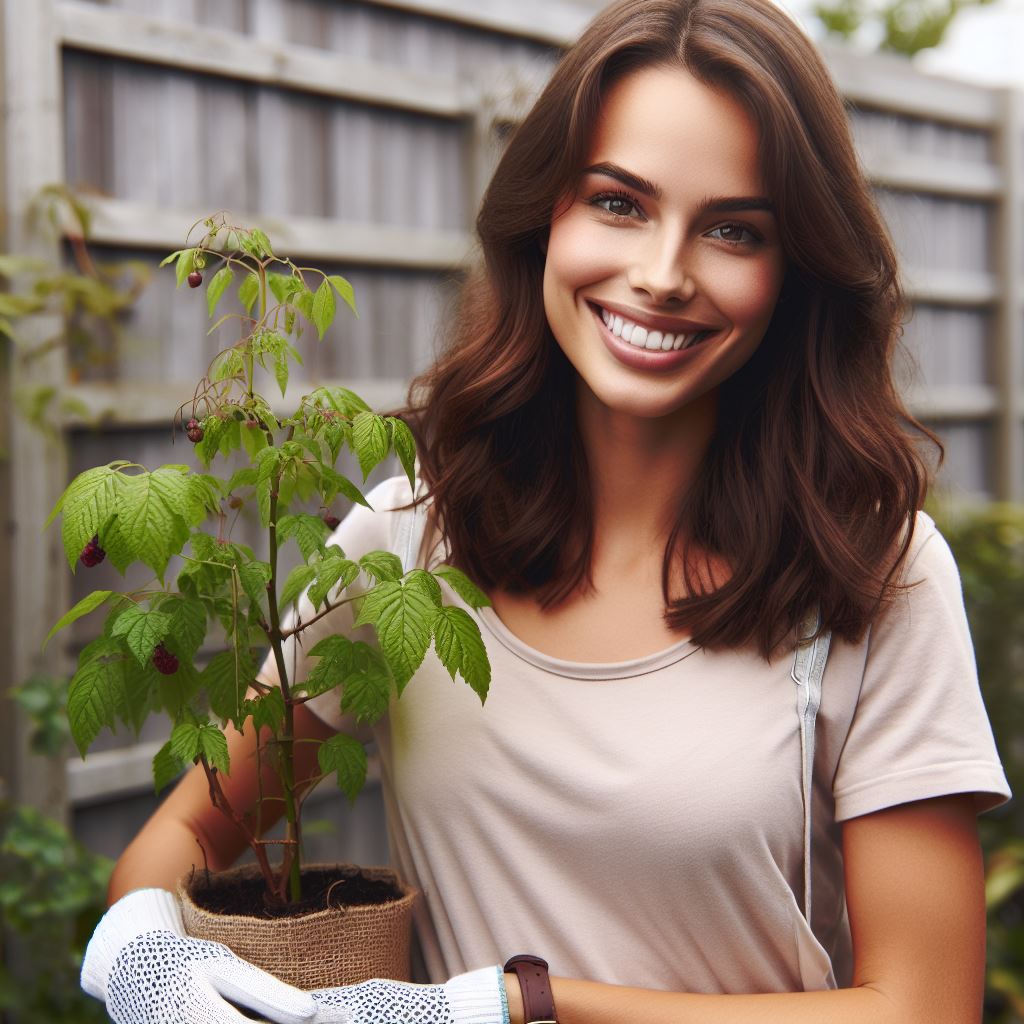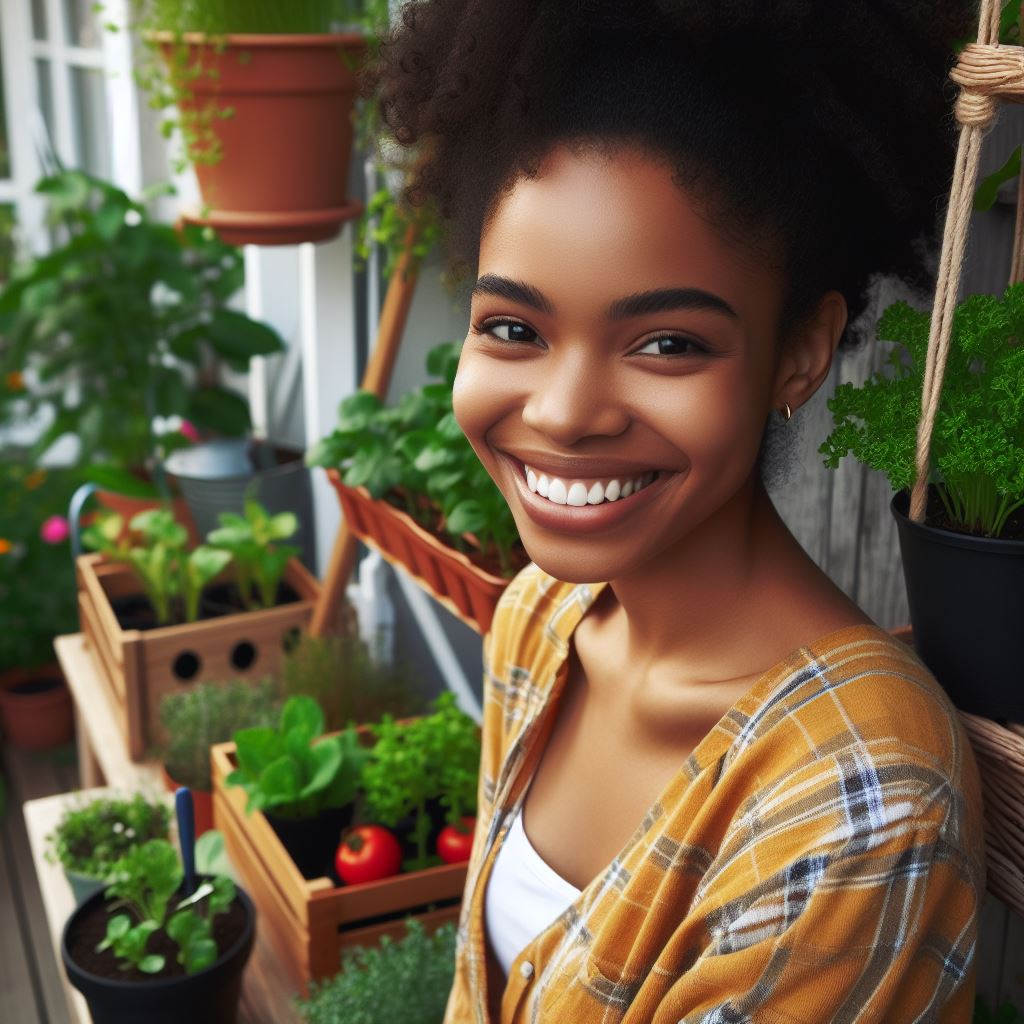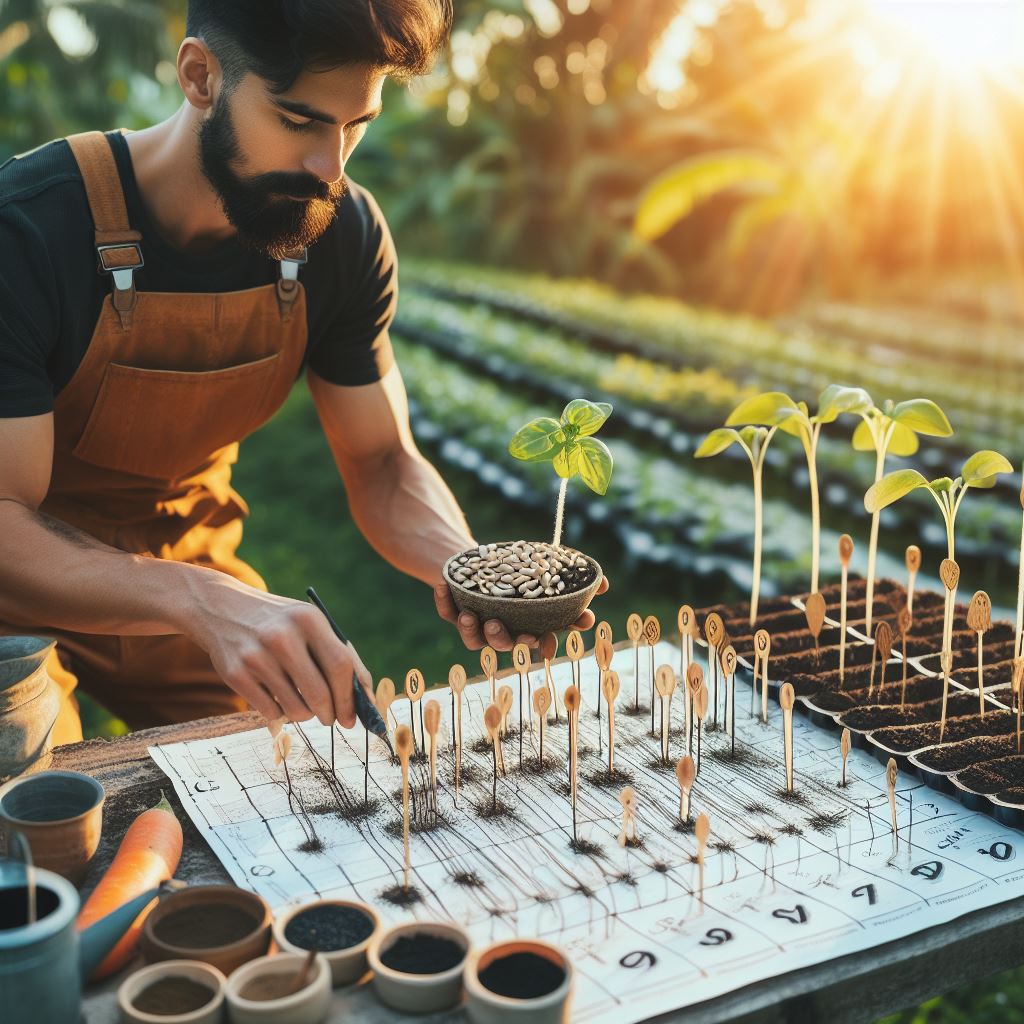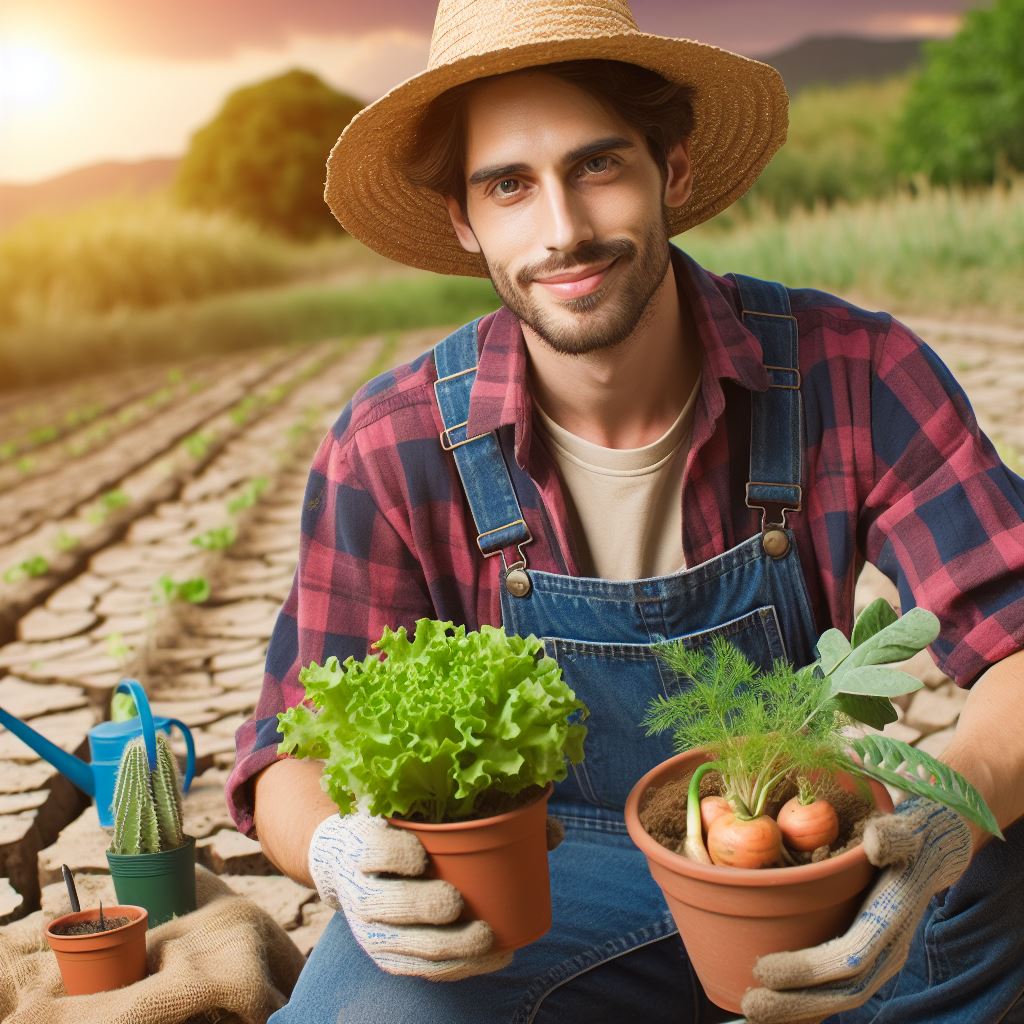Introduction
Indoor gardening is the process of growing plants indoors, usually with the aid of artificial light.
It allows for year-round harvests, providing a consistent supply of fresh produce regardless of the season.
This blog post will explore the benefits and techniques of indoor gardening and highlight the importance of year-round harvests for a sustainable lifestyle.
Definition of indoor gardening
Indoor gardening refers to the practice of growing plants inside a controlled environment, such as a greenhouse or a dedicated room, using artificial light sources and other necessary tools.
Importance of year-round harvests
Year-round harvests are crucial for ensuring a steady supply of fresh fruits, vegetables, and herbs throughout the year.
This not only provides nutritional benefits but also reduces reliance on seasonal produce and long-distance transportation.
Overview of the blog post
In this blog post, we will delve into the world of indoor gardening, discussing its advantages, challenges, and various techniques.
We will explore the different types of plants suitable for indoor cultivation, the essential equipment needed, and the optimal conditions for successful growth.
Furthermore, we will highlight the benefits of year-round harvests, including self-sufficiency, reduced environmental impact, and the joy of growing your own food.
By the end of this post, readers will have a comprehensive understanding of indoor gardening, its advantages, and how it can be implemented to achieve year-round harvests.
Whether you live in a small apartment or a house with limited outdoor space, indoor gardening opens up a whole new world of possibilities for growing your own fresh, organic produce.
Get ready to embark on an exciting journey of sustainable and satisfying cultivation.
Benefits of Indoor Gardening
Availability of fresh produce throughout the year
Indoor gardening allows you to have a year-round supply of fresh produce right at your fingertips.
With indoor gardening, you no longer have to rely on seasonal availability of fruits and vegetables.
You can grow your favorite herbs, greens, and even fruits in the comfort of your own home.
Instead of making trips to the grocery store, you can simply harvest what you need from your indoor garden.
Control over growing conditions
One of the biggest advantages of indoor gardening is the ability to have complete control over the growing conditions.
You can adjust the temperature, humidity, and lighting to create the ideal environment for your plants.
This means you can grow plants that are not suited for your climate or ones that require specific conditions.
Having control over the growing conditions also allows you to grow organic produce without the use of pesticides or chemicals.
Reduced pest problems and diseases
Indoor gardening significantly reduces the risk of pest infestations and plant diseases.
Since your indoor garden is protected from external factors, such as insects and plant pathogens, your plants are less likely to be affected.
Transform Your Agribusiness
Unlock your farm's potential with expert advice tailored to your needs. Get actionable steps that drive real results.
Get StartedYou can closely monitor your plants, spot any issues early on, and take immediate action to prevent them from spreading.
This reduces the need for harmful chemical treatments and ensures healthier, pest-free plants.
Efficient use of space and resources
Indoor gardening is an excellent solution for those with limited space or urban dwellers.
With vertical gardening systems and compact containers, you can maximize the use of available space.
You can create a lush garden in small apartments, balconies, or even on your kitchen countertop.
Indoor gardening also requires less water compared to traditional gardening methods, making it more resource-efficient.
Basically, indoor gardening offers numerous benefits that make it a popular choice among garden enthusiasts.
The availability of fresh produce throughout the year, control over growing conditions, reduced pest problems and diseases, and efficient use of space and resources are all compelling reasons to embrace indoor gardening.
Whether you live in a city apartment or a suburban home, indoor gardening allows you to enjoy the pleasure of gardening and the satisfaction of harvesting your own homegrown produce.
Read: Soil Health for Pest/Disease Control
Getting Started with Indoor Gardening
Indoor gardening provides a wonderful opportunity to enjoy fresh produce and beautiful plants year-round.
With the right plants and proper care, you can create a thriving indoor garden that adds beauty and freshness to your home.
In this section, we will discuss the various aspects of getting started with indoor gardening.
Choosing the right plants for indoor gardening
When it comes to indoor gardening, it is crucial to consider the sunlight requirements and growing conditions of the plants you choose. Some plants require full sunlight, while others thrive well in shaded areas.
Additionally, select vegetables, herbs, or ornamental plants that can adapt and flourish indoors.
Consider factors such as available space, climate, and personal preferences when making your selections.
Setting up the indoor gardening space
To create an ideal environment for your indoor garden, you need to set up the space properly.
Start by choosing appropriate containers and potting soil for your plants.
Ensure that the containers have proper drainage to prevent waterlogging.
Additionally, invest in lighting systems such as fluorescent or LED lights to provide the necessary light for plant growth.
Finally, control the temperature and humidity levels by using a thermostat or humidifier.
Watering and fertilizing indoor plants
Proper watering techniques are essential for the health of your indoor plants.
Before watering, check the moisture level of the soil to avoid overwatering or underwatering.
Remember that different plants have different water requirements, so adjust your watering schedule accordingly.
Furthermore, understand the nutrient requirements of your plants and choose the appropriate fertilization methods.
Use organic fertilizers or liquid fertilizers to provide essential nutrients for growth and development.
Maintenance and care for indoor gardens
Regular maintenance is crucial for the success of your indoor garden.
Prune and trim your plants regularly to maintain their shape and encourage new growth.
This helps prevent overcrowding and enhances the overall appearance of your garden.
Additionally, monitor the health of your plants and promptly address any issues or pests.
Inspect the leaves for signs of disease, discoloration, or pests, and take necessary action to protect your plants.
Generally, getting started with indoor gardening requires careful consideration of plant selection, proper set-up of the gardening space, adequate watering and fertilizing techniques, as well as regular maintenance and care.
By following these steps, you can create a thriving indoor garden that provides year-round harvests and adds natural beauty to your living space.
Enjoy the joys and benefits of indoor gardening!
Read: Marigolds: More Than Just Pretty
Recommended Plants for Indoor Gardening
Indoor gardening offers the convenience of having fresh produce right at your fingertips, regardless of the season.
With the right plants, you can enjoy a year-round harvest and enhance the aesthetics of your indoor space.
In this section, we will explore some recommended plants for indoor gardening, divided into three categories: easy-to-grow vegetables, herbs, and ornamental plants.
Easy-to-grow vegetables for indoor gardens
If you’re new to indoor gardening or prefer plants that require minimal attention, opting for easy-to-grow vegetables is the way to go.
Leafy greens like lettuce, spinach, and kale are ideal choices as they thrive in indoor environments.
Not only are they delicious and nutritious, but they also grow quickly, allowing you to enjoy multiple harvests throughout the year.
Another option to consider is cherry tomatoes, peppers, and cucumbers.
These vegetables can be grown in containers and provide a fresh supply of homegrown produce.
Herbs that thrive indoors
Herbs are a great addition to any indoor garden, as they are versatile and offer an abundance of flavors for your culinary creations.
Basil, mint, and parsley are popular herbs that not only enhance the taste of your dishes but also add a refreshing aroma to your indoor space.
These herbs require minimal maintenance and can be easily grown in pots or containers.
If you’re looking for more variety, consider growing thyme, rosemary, and chives.
These herbs thrive indoors and can elevate the flavors of your favorite recipes.
Ornamental plants suitable for indoor gardening
Indoor gardening is not just limited to edible plants; ornamental plants can also be a wonderful addition to your indoor space.
Spider plants, peace lilies, and pothos are beautiful, low-maintenance options that can thrive in indoor conditions.
These plants not only purify the air but also add a touch of greenery to your home.
If you’re looking to add a burst of color, orchids, African violets, and bonsai trees are excellent choices.
These flowering plants can create a visually stunning display in any indoor setting.
In a nutshell, indoor gardening allows you to cultivate a variety of plants, ranging from easy-to-grow vegetables to flavorful herbs and beautiful ornamentals.
The recommended plants mentioned in this section are just a starting point, and you can explore many other options based on your preferences and space availability.
Whether you’re a seasoned gardener or a beginner, indoor gardening offers a rewarding experience and an opportunity to create a thriving green oasis within the comfort of your home.
Read: Herbal Mixes to Protect Your Plants

Essential Tips for Successful Indoor Gardening
Providing adequate lighting for plant growth
- Choose plants that match the lighting conditions in your home.
- Use artificial grow lights to supplement natural light if needed.
- Place plants near windows to maximize sunlight exposure.
- Rotate plants regularly to ensure even growth.
Temperature and humidity control
- Keep the temperature between 65-75°F to promote healthy plant growth.
- Use a humidifier or tray with water to increase humidity levels.
- Place plants away from drafts and heating vents to avoid temperature fluctuations.
- Monitor temperature and humidity levels regularly with a thermometer and hygrometer.
Proper air circulation
- Use fans to improve air circulation and prevent stagnant air.
- Avoid overcrowding plants to allow for adequate airflow.
- Open windows occasionally to let fresh air in.
- Regularly clean leaves to remove dust and promote better respiration.
Regular monitoring and pest prevention
- Inspect plants regularly for signs of pests, such as yellowing leaves or tiny insects.
- Use organic pest control methods like neem oil or insecticidal soap.
- Quarantine infected plants to prevent the spread of pests.
- Maintain cleanliness by removing fallen leaves or decaying plant matter.
Pruning and trimming techniques
- Prune plants to promote bushier growth and remove dead or damaged parts.
- Use clean, sharp tools to prevent the spread of disease.
- Trim long stems or vines to maintain desired shape and size.
- Research specific pruning techniques for different plant varieties.
Managing watering and fertilization
- Water plants thoroughly when the top inch of soil feels dry.
- Use well-draining pots and avoid overwatering to prevent root rot.
- Adjust watering frequency based on plant needs and environmental conditions.
- Apply balanced liquid fertilizer according to plant’s specific requirements.
Troubleshooting common indoor gardening problems
- Identify and address signs of nutrient deficiencies, such as yellowing leaves or stunted growth.
- Adjust lighting or temperature if plants show signs of stress or poor growth.
- Research and diagnose common plant diseases and find appropriate treatments.
- Seek advice from experts or online plant communities for specific problems and solutions.
By following these essential tips, you can create a thriving indoor garden that provides year-round harvests.
Remember to tailor your approach to the specific needs of your plants and make adjustments as necessary.
Happy gardening!
Showcase Your Farming Business
Publish your professional farming services profile on our blog for a one-time fee of $200 and reach a dedicated audience of farmers and agribusiness owners.
Publish Your ProfileRead: Maximize Yields, Minimize Water in Urban Farms
Conclusion
Recap of the benefits of indoor gardening
Indoor gardening offers a plethora of benefits for enthusiasts.
Firstly, it provides the opportunity for year-round harvests regardless of external weather conditions.
Secondly, it allows individuals to grow a variety of plants, from herbs and vegetables to flowers, enhancing their culinary and aesthetic experiences.
Thirdly, indoor gardening promotes sustainability by reducing reliance on store-bought produce, thereby decreasing carbon footprints and promoting self-sufficiency.
Additionally, it serves as a therapeutic activity, reducing stress levels and promoting mental well-being through nurturing plants and watching them thrive.
Moreover, indoor gardening can be tailored to fit any space, whether it’s a small apartment balcony or a spacious sunroom, making it accessible to individuals regardless of living situations.
Lastly, indoor gardening fosters a sense of accomplishment and pride as gardeners witness the fruits of their labor flourish in their homes.
Encouragement to start an indoor garden for year-round harvests
If you haven’t already embarked on your indoor gardening journey, now is the perfect time to start.
With the numerous benefits it offers, indoor gardening promises to be a rewarding and fulfilling endeavor.
Whether you’re a seasoned gardener or a novice, there’s something magical about tending to plants and watching them grow right in the comfort of your own home.
Imagine plucking fresh herbs for your meals or enjoying vibrant blooms during the dreariest months of the year.
With a little dedication and creativity, you can transform any indoor space into a lush oasis of greenery and color.
So why wait? Grab some pots, soil, and seeds, and let your indoor garden adventure begin!
Final thoughts and call-to-action for readers to share their indoor gardening experiences or questions
As we wrap up this post on indoor gardening, I encourage you to share your experiences, tips, and questions with our community.
Whether you’re a seasoned indoor gardener with wisdom to impart or a curious beginner seeking guidance, your input is invaluable.
Let’s come together to inspire and support one another on our indoor gardening journeys.
Share photos of your thriving plants, ask for advice on troubleshooting issues, or simply connect with fellow plant lovers who share your passion.
Together, we can cultivate a vibrant and inclusive community dedicated to the joys of indoor gardening.
So don’t be shy—join the conversation and let’s grow together!




